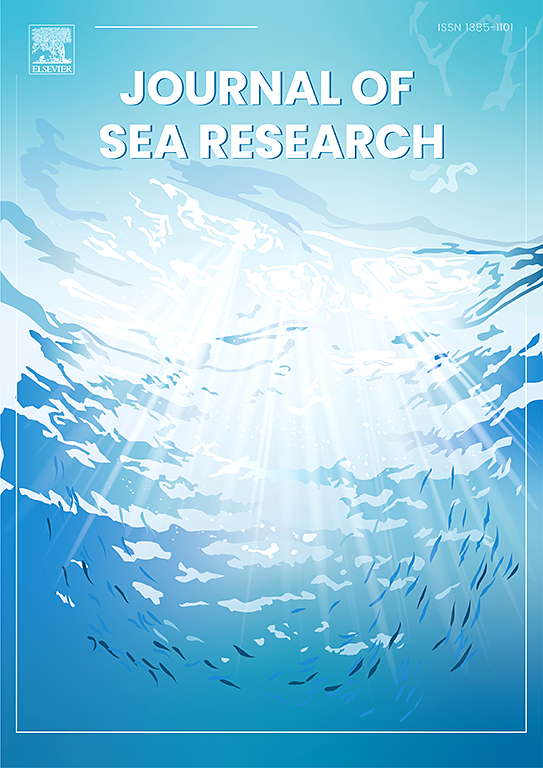基于海洋雷达图像特征融合的波高测量
IF 2.9
4区 地球科学
Q2 MARINE & FRESHWATER BIOLOGY
引用次数: 0
摘要
获取船舶位置附近的波浪信息不仅是保证航行安全的关键,也是气象预报和防灾的重要依据,在海洋工程和科学研究中具有重要意义。为了进一步提高非相干x波段海洋雷达图像有效波高的估计精度,提出了一种基于特征融合和径向基函数(RBF)网络的波高测量方法。引入从雷达图像中提取的波斜率和信噪比以及波方向、风信息等环境因素,建立特征向量作为RBF网络的输入。通过训练RBF网络模型,实现了对SWH的准确估计。利用实测雷达数据进行实验验证,实验结果表明,在考虑风信息和波浪方向等环境因素的情况下,所提出的特征融合方法比阴影统计方法和传统的基于信噪比的方法计算SWH具有更高的精度和可靠性。浮标记录与估算SWH的相关系数接近0.92,均方根误差减小到0.21 m。本文章由计算机程序翻译,如有差异,请以英文原文为准。
Wave height measurement based on feature fusion extracted from marine radar images
Obtaining wave information near the ship's location is not only crucial for ensuring navigation safety, but also an important basis for meteorological forecasting and disaster prevention, which is of great significance for marine engineering and scientific research. To further improve the estimation accuracy of significant wave height (SWH) from non-coherent X-band marine radar image, a wave height measurement method is proposed based on the feature fusion and radial basis function (RBF) network. The wave slope and signal-to-noise ratio (SNR) extracted from radar image and environmental factors such as wave direction and wind information are introduced to establish the feature vector as the input of RBF network. By training the RBF network model, accurate estimation of SWH is achieved. The measured radar data is used for experimental verification, and the experimental results show that the feature fusion method proposed has higher accuracy and reliability in calculating SWH than the shadow statistical method and the traditional SNR-based method, when the environmental factor of wind information and wave direction is considered. The correlation coefficient between buoy record and estimated SWH approaches 0.92, and the root mean square error deceases to 0.21 m.
求助全文
通过发布文献求助,成功后即可免费获取论文全文。
去求助
来源期刊

Journal of Sea Research
地学-海洋学
CiteScore
3.20
自引率
5.00%
发文量
86
审稿时长
6-12 weeks
期刊介绍:
The Journal of Sea Research is an international and multidisciplinary periodical on marine research, with an emphasis on the functioning of marine ecosystems in coastal and shelf seas, including intertidal, estuarine and brackish environments. As several subdisciplines add to this aim, manuscripts are welcome from the fields of marine biology, marine chemistry, marine sedimentology and physical oceanography, provided they add to the understanding of ecosystem processes.
 求助内容:
求助内容: 应助结果提醒方式:
应助结果提醒方式:


